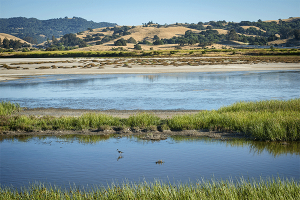 The state’s cost-benefit analysis of the Delta Conveyance Project (DCP) shows the project is a net benefit for Californians.
The state’s cost-benefit analysis of the Delta Conveyance Project (DCP) shows the project is a net benefit for Californians.
In a recent report, the California Department of Water Resources (DWR) estimates the DCP will provide $2.20 in benefits for every $1 spent. While the cost of the project is estimated at $20.1 billion “doing nothing” will cost California billions of dollars and jeopardizes the water source for millions of state residents and more than 750,000 acres of farmland, the report stated.
“The benefit-cost analysis underscores the fact that this project is a real investment in California’s future, potentially bringing billions in economic advantages to the state,” said California Chamber of Commerce President and CEO Jennifer Barrera. “California’s economy relies on the success of its private sector businesses and agricultural operations which are dependent on stable, reliable water supplies. Improving California’s water system and its infrastructure through the Delta Conveyance Project is mission critical for California’s economic future.”
In a statement, the DWR affirmed the benefit-cost analysis provides a compelling financial rationale for the construction of the DCP.
“Twenty-seven million people rely on these surface water supplies that support a $2.3 trillion economy in California,” said Karla Nemeth, DWR director. “There is a very real cost to do nothing. It is vastly more efficient and economical to avoid declining supplies. Water shortages, mandatory restrictions, land fallowing and job loss all impact our state and local economies.”
The Sacramento-San Joaquin Delta is central to an aging system of dirt levees, aqueducts and pipes that delivers water to homes, farms and businesses throughout the state. The system is at risk of collapse if there is a major earthquake or flood and salinity caused by sea level rise threatens water quality.
Water Supply
The DWR said the DCP will give water managers more flexibility, adding the ability to capture more water during high rains. For example, if the DCP had been in operation between January 1–May 9, 2024 the state could have captured about 909,000 acre-feet of water, enough to supply more than 9.5 million people or more than 3.1 million households for one year.
$200 Million Set Aside for Local Delta Community Projects
The DWR report noted that $200 million in funding has been set aside for the DCP’s Community Benefits Program, recognizing that while the benefits of the project are in other parts of California, the construction effects are local.
This program includes a grant fund for local projects, business development set aside for job training and local business utilization, and potential “leave-behinds” like broadband or other infrastructure.
Later this year, the DWR will publish a draft implementation plan for community review and input. It will include details about funding criteria and program administration.
Californians for Water Security
The CalChamber is a member of Californians for Water Security, a growing coalition of more than 12,000 California citizens and more than 80 organizations representing business leaders, labor, family farmers, local governments, water experts, infrastructure groups, taxpayer associations, and others who support the plan to fix California’s broken water distribution system.
The coalition is waging an active advertising, grassroots lobbying, social media and public advocacy campaign to support this important project to fix California’s aging water distribution infrastructure and improve water reliability and security throughout the state.
For more information on Californians for Water Security, visit: www.watersecurityca.com.
Staff Contact: Brenda Bass


